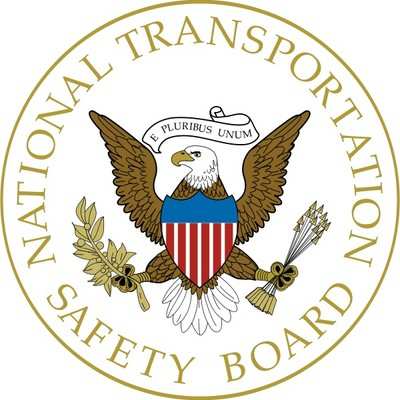Two Witnesses Reported There Was Smoke Trailing From The Airplane And That The Engine Was Running Rough
Location: Oklahoma City, OK Accident Number: CEN24FA057
Date & Time: December 10, 2023, 10:19 Local Registration: N6945Q
Aircraft: Beech A23-24 Injuries: 2 Fatal
Flight Conducted Under: Part 91: General aviation - Personal

On December 10, 2023, about 1019 central standard time, a Beech A23-24 airplane, N6945Q, was destroyed when it was involved in an accident near Oklahoma City, Oklahoma. The pilot and his passenger were fatally injured. The airplane was operated as a Title 14 Code of Federal Regulations Part 91 personal flight.
According to recordings of air traffic control (ATC) tower communications at Wiley Post Airport (PWA), Oklahoma City, Oklahoma, about 1015:37, the pilot told the tower controller that he was holding short of runway 35R on taxiway A1 and was ready to depart to the north under visual flight rules (VFR). The tower controller then cleared the pilot for takeoff on runway 35R. A review of automatic dependent surveillance-broadcast (ADS-B) track data revealed that the airplane’s liftoff occurred before midfield and that the airplane was climbing though 300 ft above ground level (agl) as it flew over the end of runway 35R.
At 1016:57, a security camera located on a hangar near the east end of taxiway A5 captured the airplane in a climb from runway 35R. As the airplane continued the climb to the north there was possible evidence of intermittent smoke trailing behind the airplane. According to ADS-B track data, after takeoff the airplane continued in the climb while on a north ground track, as shown in figure 1. About 1018:26, the airplane entered a left turn toward the south and the pilot told the tower controller, “we are going to return for landing.”
About 1018:39, the pilot told the tower controller, “we are losing power.” About 1018:45, the airplane was halfway through a 180° turn toward the airport when it entered a descent from about 2,100 ft mean sea level (msl). About 1018:52, the pilot stated that he was “declaring an emergency.” The tower controller subsequently cleared the pilot to land on the runway of his choice. About 1019:29, the tower controller stated that the surface wind was from 320° at 5 knots.
The ADS-B track data showed the airplane continued the descent toward the airport and became aligned with runway 17R. At 1019:50, the final ADS-B return was recorded about 0.5 mile north of the runway 17R threshold at an altitude of about 1,375 ft msl (100 ft agl). At that time, the airplane’s ground speed and vertical speed were 64 knots and -704 feet per minute, respectively.
The same security camera that captured the airplane’s takeoff from runway 35R also captured the airplane as it descended toward the airport. At 1019:13, the video footage showed the airplane descending with light colored smoke trailing the airplane. Beginning at 1020:04, dark smoke began rising from the accident site location.
Two witnesses reported there was smoke trailing from the airplane and that the engine was running rough shortly before the accident. One witness noted that the trailing smoke was a gray/white color. A third witness stated that the engine was sputtering as it flew over his position and then it made a 180° turn toward the airport.
The aircraft impacted a 15-foot-tall pile of concrete rubble at a concrete recycling facility on an approximate 180° heading. The upper portion of nose landing gear, the nose gear fork, nose wheel and tire, and the right main landing gear were found separated among the top of the rubble. Tire markings and red paint transfer (matching the aircraft color) were observed on multiple pieces of concrete. One of the tire tracks was outlined by an oily substance consistent with engine oil. The fractured nose gear segment and nose wheel tire were coated with a thin layer of what appeared to be engine oil. The right lower portion of the cowling, also coated with oil, came to rest next to the nose gear segment.
The outboard six feet of the right wing fracture separated and came to rest inverted at the bottom of the rubble pile and sustained significant thermal damage that consumed portions of the skin. The main wreckage came to rest in an open grass area on a south-southwest heading about 40 ft beyond the concrete rubble pile. The main wreckage included the fuselage, engine, propeller, left wing, inboard portion of the right wing, and tail section. The left main landing gear separated from the wing and was found about 60 ft past the main wreckage. All structural components and flight control surfaces were located at the accident site.
Most of the wreckage sustained heavy thermal damage that consumed the fuselage skin and structure. The inboard portion of the right-wing separated at the wing root and came to rest beside the fuselage. Thermally damaged portions of the horizontal stabilator and the tail beacon were identified beneath the fire damaged section of the cockpit and right wing. The upper surface of the right-wing integral fuel tank was consumed by fire. The left-wing upper skins forward of the main spar from the root to the aileron were mostly consumed by fire. An examination of the flight control system was limited due to the extent of thermal damage; however, there was no evidence of a flight control cable separation. The flap selector assembly was found in the flaps retracted position. The airframe examination revealed no evidence of a preimpact mechanical malfunction or failure that would have precluded normal operation.
 ANN's Daily Aero-Term (12.08.25): Decision Altitude (DA)
ANN's Daily Aero-Term (12.08.25): Decision Altitude (DA) ANN's Daily Aero-Linx (12.08.25)
ANN's Daily Aero-Linx (12.08.25) NTSB Final Report: Piper PA-31T3
NTSB Final Report: Piper PA-31T3 Aero-News: Quote of the Day (12.08.25)
Aero-News: Quote of the Day (12.08.25) Airborne-Flight Training 12.04.25: Ldg Fee Danger, Av Mental Health, PC-7 MKX
Airborne-Flight Training 12.04.25: Ldg Fee Danger, Av Mental Health, PC-7 MKX



